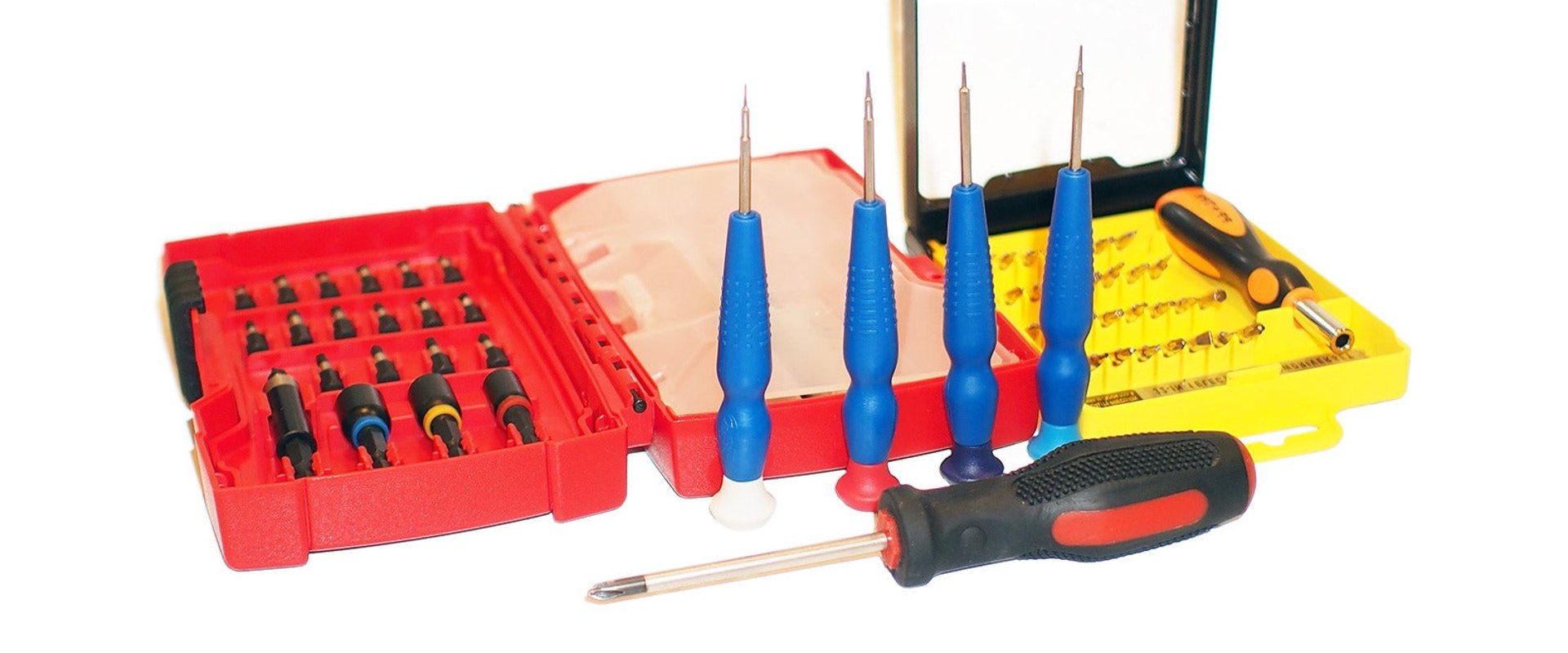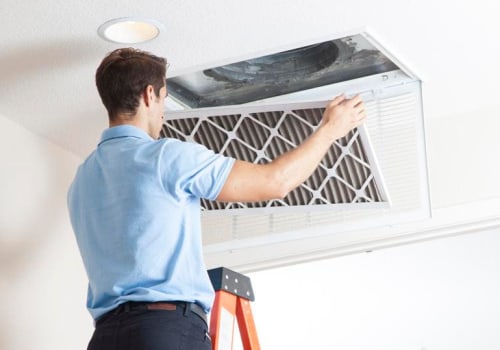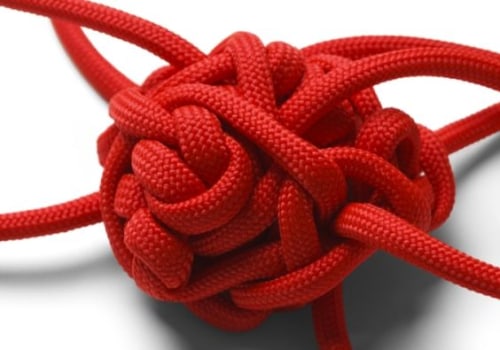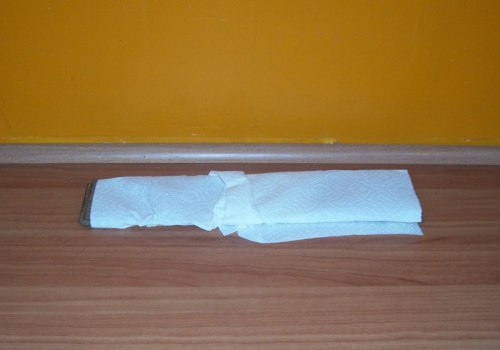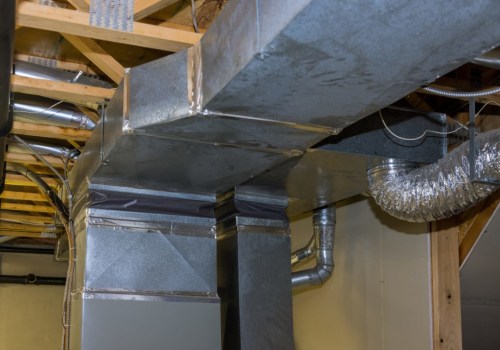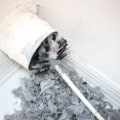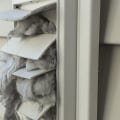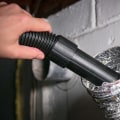Are you looking for the perfect tools for DIY air duct cleaning? Then screwdrivers and pliers are essential. Whether you’re a professional or an amateur, having the right tools can make all the difference when it comes to air duct cleaning. In this article, we’ll discuss everything you need to know about screwdrivers and pliers, including what makes them so useful, how to choose the right ones, and more. Read on to learn more about screwdrivers and pliers and get the most out of your DIY air duct cleaning projects!With the right tools, DIY air duct cleaning can be a breeze. Screwdrivers and pliers are essential components of any DIY air duct cleaning toolkit.
From fastening screws to gripping and cutting wires, these two tools are necessary for any job. In this article, we'll discuss everything you need to know about screwdrivers and pliers – from the different types available to the best uses for each one. So, if you're ready to learn more about how to use screwdrivers and pliers, read on!Screwdrivers and Pliers are essential tools for DIY air duct cleaning. They can help you access difficult-to-reach areas, remove components, and perform detailed cleaning work.
There are a variety of screwdrivers and pliers available, each with its own unique uses and benefits. It is important to select the right tool for the job in order to ensure a safe and successful cleaning experience. The most common types of screwdrivers used in air duct cleaning are flathead screwdrivers, Phillips head screwdrivers, and Torx head screwdrivers. Flathead screwdrivers have flat blades and are used to loosen and tighten flat-headed screws. Phillips head screwdrivers have cross-shaped blades that fit into the cross-shaped slots of Phillips head screws.
Torx head screwdrivers have star-shaped blades that fit into the star-shaped slots of Torx head screws. Pliers come in a variety of shapes and sizes, including slip-joint pliers, long-nose pliers, and needle-nose pliers. Slip-joint pliers have two sets of jaws that can be adjusted to different sizes. Long-nose pliers have long, narrow jaws that allow for more precise work.
Needle-nose pliers have very fine points on the end of their jaws, which make them ideal for accessing tight spaces. When using screwdrivers and pliers for air duct cleaning projects, it is important to select the right tool for the job. If you attempt to use a tool that is too big or too small for a particular job, you may damage the screws or other components in the duct system. If you are unsure which tool is best for a particular job, consult with a professional air duct cleaner. In addition to selecting the right tool for the job, it is important to use screwdrivers and pliers safely. Always wear safety glasses when using these tools, as debris or metal shavings can fly into your eyes.
Additionally, use caution when using force on a stuck screw or component, as this can cause damage to the ductwork. If you are having difficulty removing a screw or component, contact a professional. To ensure the longevity of your tools, it is important to maintain them properly. After each use, clean your tools with a soft cloth or brush to remove any debris or dirt. Additionally, apply a light coating of oil to prevent rusting and wear.
Finally, store your tools in a dry place away from direct sunlight or moisture.
Screwdrivers and pliers
are essential tools for DIY air duct cleaning projects. It is important to select the right tool for the job, use them safely, and maintain them properly. By following these tips, you can ensure your tools will last for years and help you complete your air duct cleaning projects quickly and safely. Screwdrivers and pliers are essential tools for DIY air duct cleaning. They are invaluable for accessing difficult-to-reach areas, removing components, and performing detailed cleaning work.It is important to choose the right type of screwdriver and pliers for the job. Different types of screwdrivers and pliers have different functions and features that make them suitable for different tasks.
Types of Screwdrivers and Pliers
- There are many different types of screwdrivers and pliers available. The most common are flathead and Phillips head screwdrivers, as well as pliers like needle-nose, lineman's, and combination pliers.Flathead screwdrivers are used for loosening and tightening flathead screws, while Phillips head screwdrivers are designed for Phillips head screws. Needle-nose pliers are best used for precision work, while lineman's pliers are designed for cutting wire. Combination pliers are used for gripping, twisting, and cutting objects.
Using Screwdrivers and Pliers
- When using screwdrivers and pliers in air duct cleaning projects, it is important to use the correct tool for the job.This will help ensure that the job is done safely and effectively. For example, if you need to loosen a flathead screw, you should use a flathead screwdriver, not a Phillips head screwdriver. Similarly, if you need to cut a wire, you should use lineman's pliers, not needle-nose pliers.
Tips for Choosing the Right Tool
- When choosing the right tool for the job, it is important to consider the size and shape of the components you are working with.You should also consider how much force you need to apply when using the tool. For example, if you need to apply more force when loosening or tightening a screw, you should choose a larger screwdriver or plier.
Using Screwdrivers and Pliers Safely
- When using screwdrivers and pliers, it is important to use them safely. Always wear safety glasses or goggles when working with tools to protect your eyes from flying debris or sparks.Make sure to hold the tool firmly in place when using it to avoid slipping or dropping it. Also, make sure to keep your tools in good condition by regularly inspecting them for damage or wear.
Maintaining Your Tools
- To ensure your tools last a long time, it is important to maintain them properly. Always clean your tools after use with a soft cloth or brush to remove dirt or debris.Be sure to oil any moving parts on your tools regularly to keep them working properly. Finally, make sure to store your tools in a dry place when not in use to prevent corrosion or damage from moisture.
Using Screwdrivers and Pliers Safely
When using screwdrivers and pliers for DIY air duct cleaning, it's important to practice safety measures. Wearing protective gear, such as safety glasses, gloves, and a dust mask, is essential. It's also important to follow the instructions carefully and use the right tool for the job.Working with these tools can be dangerous if done improperly. Additionally, inspect the screwdriver and pliers before use to make sure they are in proper working condition. If they look damaged or worn, do not use them. If you're not sure how to use a tool properly, consult the instructions or ask an expert for help. Finally, it's important to store tools properly when they are not in use. This will help ensure that they are in good working order when you need them, and will reduce the risk of potential accidents.
Maintaining Your Tools
Maintaining your screwdrivers and pliers is essential for ensuring they stay in good condition and perform their job safely and effectively.There are several steps you should take to keep your tools in top condition, including cleaning them after each use, oiling or greasing moving parts regularly, and storing them properly. After each use, it is important to clean your tools with a clean cloth and some mild soap. This will help remove any dirt, grease, or other debris that has accumulated on the surface. If the tools are particularly dirty, you may need to use a stiff brush to scrub off the dirt. It is also important to oil or grease any moving parts of your tools. This will help keep them in good working condition and reduce the risk of them breaking or becoming damaged.
Be sure to use a lubricant specifically designed for tools, as other lubricants may damage the parts. Finally, it is important to store your tools properly when not in use. This means keeping them away from extreme temperatures and moisture and in a dry, safe place. If possible, store them in a toolbox or other container that can be locked up when not in use.
Types of Screwdrivers and Pliers
Screwdrivers and pliers are essential tools for DIY air duct cleaning. They come in a variety of shapes and sizes, each designed for different types of tasks.The most common type of screwdriver is the flathead, which has a single flat blade that fits into the slot of a screw head. The Phillips head is similar to the flathead, but with a cross-shaped head that helps it fit into cross-shaped screw slots. Another type of screwdriver is the Torx, which is used to drive Torx-style screws. Needle-nose pliers are a type of pliers that have thin, pointed jaws and are often used for intricate work such as wiring or holding small objects in place.
Side-cutting pliers have a curved jaw and are used for cutting wires and other materials. Combination pliers have both a straight and curved jaw and can be used for gripping, cutting, and twisting wires. Long-nose pliers are similar to needle-nose pliers, but they have longer jaws that provide more reach. When using screwdrivers and pliers for DIY air duct cleaning, it is important to select the right type of tool for the job.
The wrong tool can damage parts or cause injury. It is also important to ensure that all tools are in good working order and properly secured before use.
Maintaining Your Tools
Maintaining your screwdrivers and pliers is essential for their longevity and efficacy. Cleaning them after each use is important to reduce the risk of corrosion and ensure a smooth operation. Additionally, you should oil or grease moving parts regularly, as this will help keep them in good working order.Finally, it’s important to store your tools properly when not in use, as this will help protect them from damage and extend their lifetime.
Cleaning
: After each use, clean your tools to get rid of dirt, dust, and other debris that may have accumulated. This will help prevent corrosion and ensure that the tools operate smoothly. Use a damp cloth to wipe them down, taking care to get into crevices and hard-to-reach areas.Oiling/Greasing
: Regularly oil or grease moving parts of your tools. This will help them operate smoothly and reduce the risk of any wear or tear.Storing
: When not in use, store your tools in a dry location away from moisture.This will help protect them from damage and extend their lifetime.
Types of Screwdrivers and Pliers
When it comes to DIY air duct cleaning, having the right tools is essential. Two of the most important tools that you should have in your arsenal are screwdrivers and pliers. Different types of screwdrivers and pliers are available to help you access difficult-to-reach areas, remove components, and perform detailed cleaning work. Flathead screwdrivers, for example, are the most commonly used type of screwdriver. The flathead screwdriver has a single, flat blade that fits into the slot of a flathead screw.Phillips head screwdrivers are similar, but the blade is slightly different, designed to fit into the cross-shaped slots of a Phillips screw. Needle-nose pliers are useful for gripping small components or reaching into tight spaces. Side-cutting pliers are designed to cut through wires and other materials. Other types of pliers include combination pliers, lineman’s pliers, and adjustable pliers.
When using any tool for air duct cleaning, safety is paramount. Make sure to wear protective gear such as goggles and gloves when working with sharp tools. Keep all tools in good condition and use them as directed.
Using Screwdrivers and Pliers Safely
When using screwdrivers and pliers, safety is of the utmost importance.It is important to wear proper protective gear, such as goggles and gloves, when working with these tools to protect yourself from potential injury. Additionally, it is important to read and follow all instructions carefully so that you understand how to properly use the tools. Finally, it is important to select the right tool for the job; using the wrong tool could result in damage to the object or potential injury to you. When selecting the right screwdriver or pliers, make sure that it is the correct size and shape for the job. It is also important to make sure that the screwdriver or pliers are in good condition and free of any defects.
Additionally, if you are using power tools, make sure that they are well maintained and properly functioning. When using screwdrivers and pliers, always make sure that your hands are dry and clean. This helps to reduce the risk of slipping and causing potential injury. Also, make sure that you have a firm grip on the tool and do not attempt to force it into an area where it does not fit. Additionally, make sure that you are using the correct amount of pressure when tightening or loosening screws; too much pressure can cause damage to the object or potential injury to you. Finally, when working with screwdrivers and pliers, always keep in mind that they are sharp tools.
Make sure to use them with caution and be aware of any potential hazards. With these tips in mind, you can use screwdrivers and pliers safely and effectively for your DIY air duct cleaning project. In conclusion, it is important to select the right screwdrivers and pliers for your air duct cleaning projects. Different types of screwdrivers and pliers are available, and each one has specific uses. It is also essential to use these tools safely, following best practices and manufacturer instructions.
Regular maintenance is also important in order to keep your tools in good working condition for a long period of time. In conclusion, screwdrivers and pliers are essential tools for DIY air duct cleaning. There are several different types of screwdrivers and pliers available, each of which can be used in different ways to access and clean difficult-to-reach areas. It's important to choose the right tool for the job and use it safely, as well as to maintain your tools regularly in order to keep them in good working condition.
By following these best practices, you can ensure that your screwdrivers and pliers will serve you well for many years of air duct cleaning projects.
